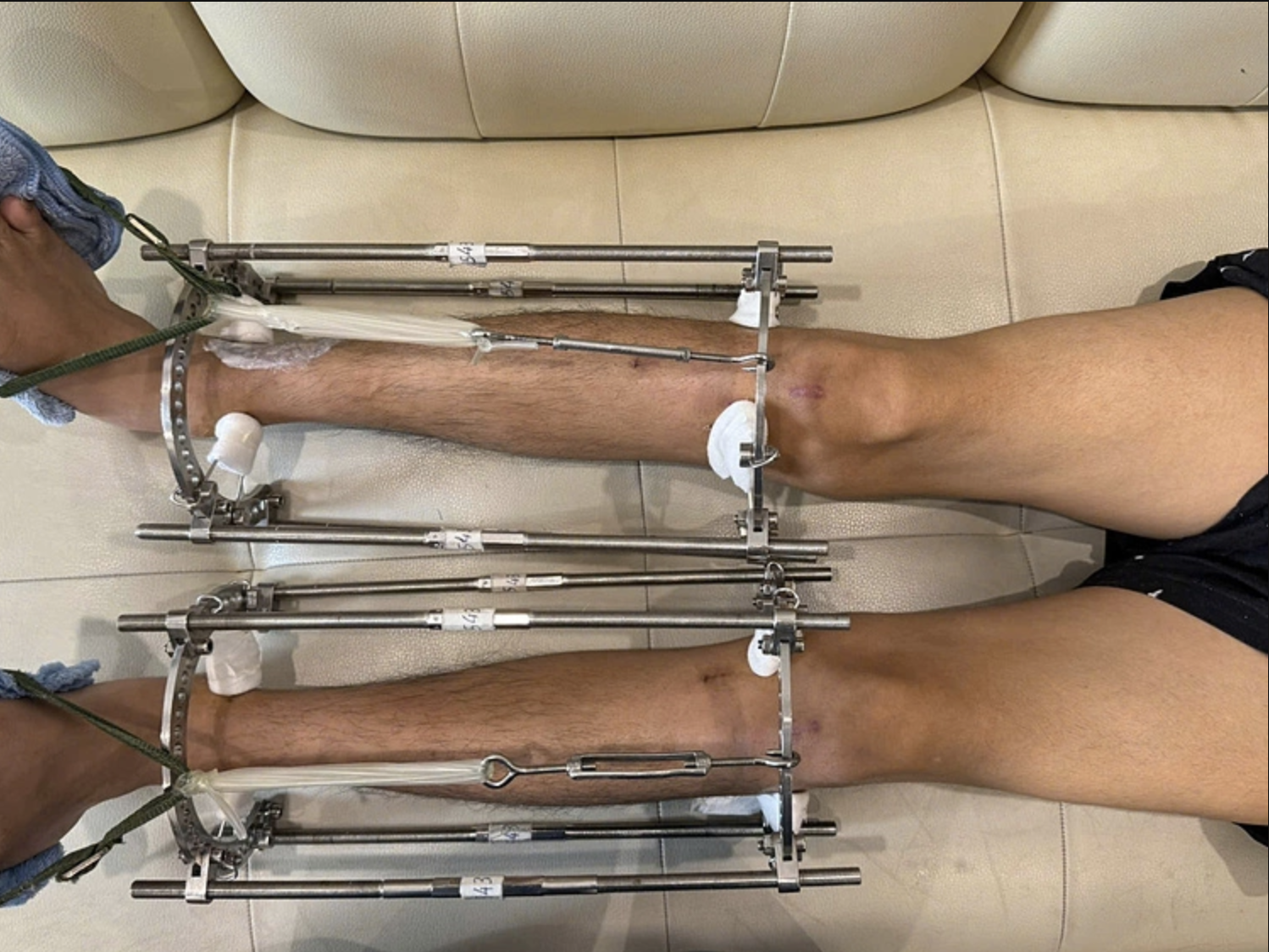Imagine voluntarily breaking your own legs—not in an accident, but in a carefully planned surgery—to gain a few extra centimeters in height. Ironically, this is the reality for some who undergo limb lengthening surgery, a medical procedure where bones are surgically fractured and slowly stretched to make the person taller.
Once reserved for correcting severe leg injuries or congenital disabilities, this procedure is increasingly sought after as a voluntary, cosmetic option. The journey is long, painful, and expensive, but for many, the allure of added height and greater confidence outweighs the risks.
How does limb lengthening surgery work?
Limb lengthening surgery, initially designed to correct bone deformities, has evolved into a method for increasing height for cosmetic purposes.
The procedure involves cutting the femur or tibia (thigh bone or shinbone), then inserting an external fixator or an internal magnetic metal rod. These devices gradually pull the bone segments apart, prompting new bone to form in the gap, a process called distraction osteogenesis.
With external fixators like the Ilizarov device, the patient or a caregiver must manually adjust the device daily. Internal magnetically controlled rods (e.g., the PRECICE system) offer a less invasive option with a reduced risk of infection.
Height gain potential and benefits
Most individuals gain 5 to 8 cm in height from femur surgery, with a total potential increase of 13 to 15 cm if both the femur and tibia are treated.
Benefits include a more proportional body, improved confidence, and psychological relief, especially for those who are relatively short or feel limited by their height.
Cost and accessibility
Along with being quite painful, this is a high-cost surgery, especially when performed for cosmetic reasons. In the US, prices range from 120,000 to 250,000 USD, sometimes prompting medical tourism to more affordable locations.
Other estimates include 90,000 to 95,000 GBP in the UK and around 125,000 USD (femur) or 135,000 USD (tibia) at specialized centers.
 |
A patient's legs after surgery to install a shaping frame. Photo: Minh Hieu. |
A patient's legs after surgery to install a shaping frame. Photo: Minh Hieu.
Painful, arduous process and recovery
This process is physically demanding and takes a significant toll. Post-operative pain is managed in the hospital, but the real struggle comes during the slow, daily stretching and intensive physical therapy.
Some patients describe sleepless nights, daily stretching with a hex wrench, and chronic physical therapy to relearn how to walk. Many find the experience akin to medieval torture, with intense nerve pain, tight hamstrings, and emotional stress.
Risks and complications
Serious risks accompany this procedure: infection, especially with external fixators, which insert pins through the skin; nerve and muscle damage; joint stiffness; contractures; and arthritis over time. Equipment failure, such as a broken rod, or the bone not hardening properly (non-union) can also occur.
Severe cases can involve blood clots, "ballerina syndrome" (overstretched Achilles tendon), and even death.
Why do people still choose it?
Despite the pain, many people still sign up for limb lengthening surgery. Most are driven by societal pressure, self-esteem issues, or dating insecurities, and accept the trade-offs. Some feel it changes how they are perceived—greater respect, opportunities, and confidence.
However, regardless of the reason, experts warn that seeking validation through physical appearance can be "a slippery slope".
My Y (Times of India)












